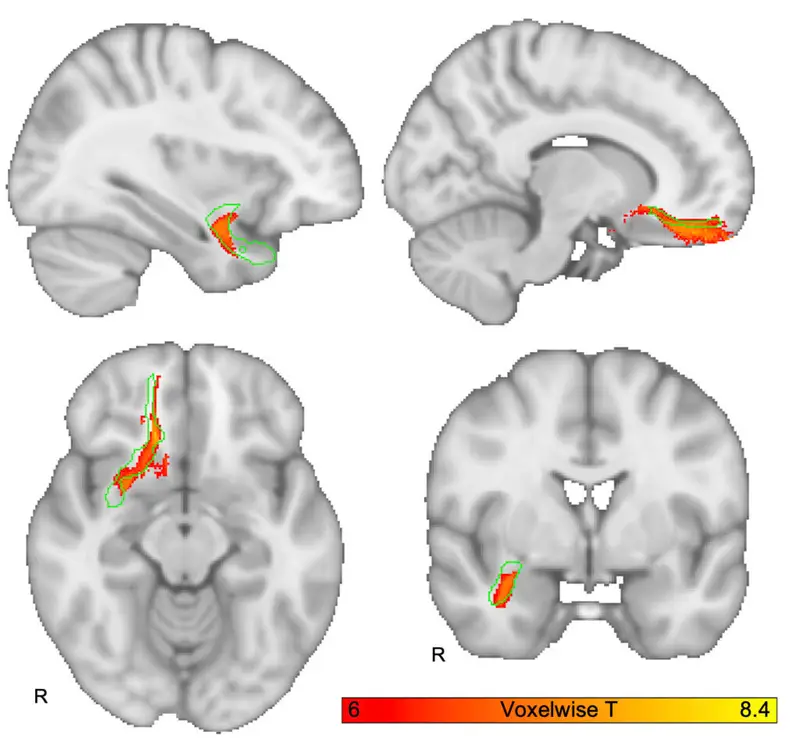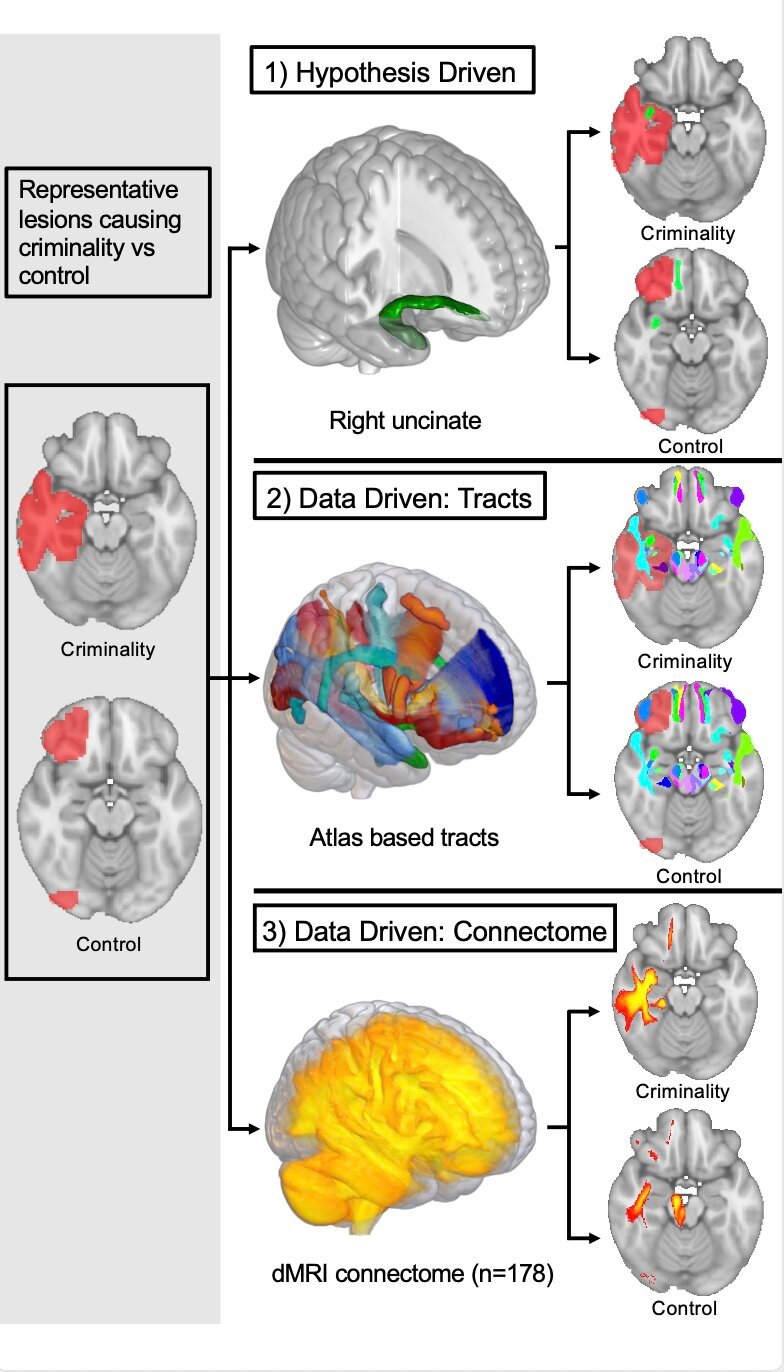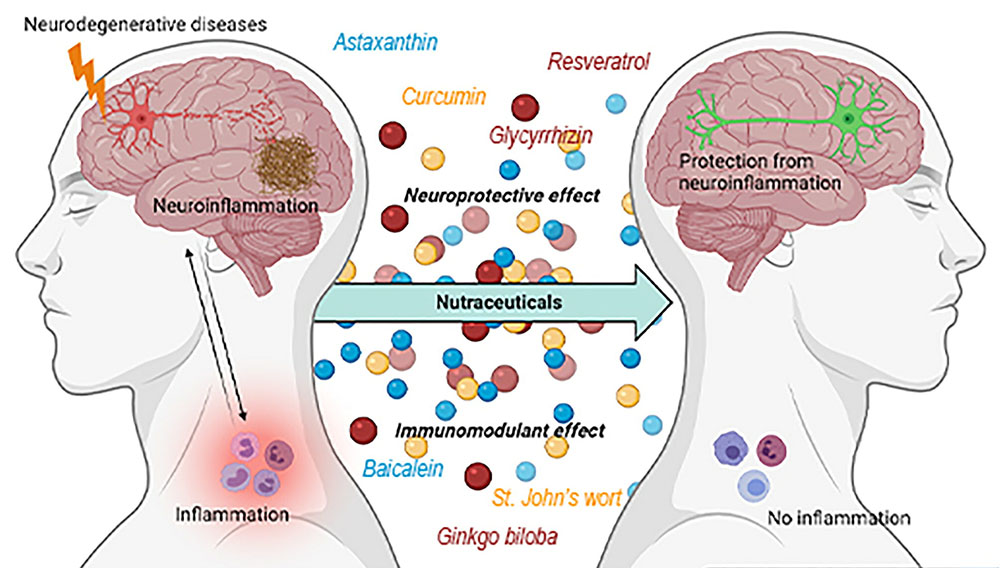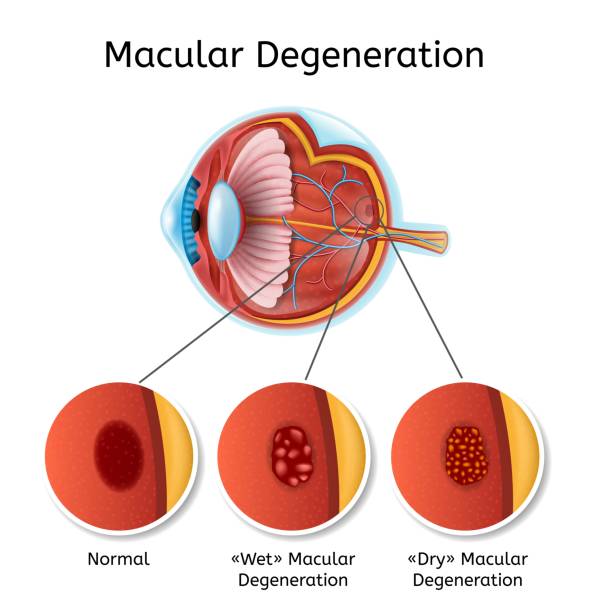In recent years, a strange new kind of evidence has begun to appear in courtrooms: brain scans. Once the domain of hospitals and labs, MRIs and neural imaging now sit beside legal briefs and witness testimonies, offered as explanations—or even defenses—for why someone may have committed a crime. For some, this feels like science fiction. For others, it feels like a moral minefield. Could damage to a specific part of the brain truly cause someone to become a criminal? Or is this just another way to dodge responsibility?
A groundbreaking new study, published in Molecular Psychiatry by researchers from Brigham and Women’s Hospital, Harvard Medical School, and other U.S. institutions, dives headfirst into this question. Their answer? In some cases, yes—certain brain injuries may directly cause law-abiding individuals to commit crimes.
And their evidence isn’t theoretical. It’s written in the folds of injured brains and echoed in real-life cases of patients who, after suffering brain damage, suddenly began to act violently and impulsively.
A Doctor’s Curiosity, A Patient’s Dark Turn
For Dr. Isaiah Kletenik, the study’s lead author, this research began with unsettling encounters during his training in behavioral neurology. He met patients who had lived peacefully for decades—until the onset of a brain tumor or neurodegenerative disease changed something fundamental.
They started behaving aggressively, violating social norms, and in some cases, committing crimes.
“While it is generally accepted that brain injury can lead to problems with memory or motor function,” Kletenik explained, “the role of the brain in guiding social behaviors like criminality is more controversial, as it touches on moral culpability and free will.”
The question haunted him: Were these people morally responsible—or were they victims of their own malfunctioning brains?
That haunting question became the foundation of this latest research.
Searching for the Criminal Switch
Kletenik and his colleagues began by gathering clinical cases of patients who had no history of criminal behavior—until they experienced a brain injury. In total, they studied 17 rare cases where a person began committing crimes only after suffering trauma to the brain.
The team then mapped the precise location of each patient’s brain lesion and compared the results to a massive control group: 706 other patients who had brain injuries but did not develop criminal tendencies. These control patients had symptoms like memory loss or depression, but no violent outbursts.
What they discovered could reframe how we think about the brain’s role in moral decision-making.
The Uncinate Fasciculus: A White Matter Wire to Behavior
Buried deep in the brain, a white matter tract called the right uncinate fasciculus may be key to understanding this puzzle. This tract acts as a highway connecting regions involved in emotional regulation (like the amygdala) with areas responsible for decision-making and social judgment (like the prefrontal cortex).
In nearly all of the 17 cases of lesion-induced criminality, the right uncinate fasciculus had been damaged.

This tract, the study suggests, is not just a passive cable of tissue. It’s a conductor of impulse control, empathy, and inhibition. When it’s severed or degraded, the brain may lose its ability to manage violent or antisocial urges.
“Our results suggest that if an individual has a new brain injury to specific white matter locations—especially to the right uncinate fasciculus—and shows new onset criminal behavior, there is an increased likelihood that the injury plays a causal role,” Kletenik said.
In short, when that brain connection is broken, a person’s moral compass may break too.
Not Just Correlation—Causation
This is what makes the findings so powerful: they suggest causation, not just correlation. Past research has hinted at links between certain brain structures and antisocial behavior, but critics often argue that such connections are incidental—merely side effects, not causes.
This study takes a step further. By comparing those who did become criminal after injury to a much larger group who did not, the team could isolate what was different. And that difference, again and again, pointed to the uncinate fasciculus.
“Structural brain imaging is increasingly being introduced as evidence in criminal trials, yet there is limited scientific research to guide how such data is interpreted,” Kletenik said. “This study adds necessary clarity.”
Redrawing the Line Between Choice and Cause
This research doesn’t absolve people of all responsibility, nor does it suggest that anyone with brain damage is dangerous. But it raises critical questions for both science and the law: When does a choice stop being a choice? When does biology override intention?
Judges and juries must grapple with these questions in real time, in real cases. If someone’s violent act can be traced back to a traumatic brain injury—like a stroke or tumor—should that change how they’re punished? How they’re rehabilitated? Are they criminals, or patients?
In a justice system built on the idea of free will and accountability, brain science like this can feel like a hand grenade.
The Future of Neuroscience in Court
Kletenik’s team hopes their research can serve as a guide—especially as brain scans become more common in legal defense. The goal is not to excuse behavior, but to better understand it. If a specific lesion can lead to drastic changes in morality or aggression, perhaps legal responses can be more informed, and medical interventions more targeted.
“These findings can help assess whether focal brain injuries may be implicated in new-onset criminality,” said Kletenik, “and contribute to our growing knowledge about how social behavior is mediated by the brain.”
Future studies will likely expand the sample size, explore different types of injuries, and track whether treating or supporting affected brain regions can prevent these behavioral shifts.
For now, the right uncinate fasciculus has emerged as a white-hot focus of brain-behavior research—and perhaps, as a bridge between the cold facts of neuroscience and the moral heat of human action.
A Brain on Trial
The courtroom has long been a place for facts, emotion, argument, and judgment. But as science marches forward, it’s becoming something else too—a frontier where biology and morality meet.
As one gavel drops, and a scan flickers on a screen, society is forced to reckon with the ancient question in a new light: When the brain commits a crime, who stands guilty?
Reference: Isaiah Kletenik et al, White matter disconnection in acquired criminality, Molecular Psychiatry (2025). DOI: 10.1038/s41380-025-03076-z






